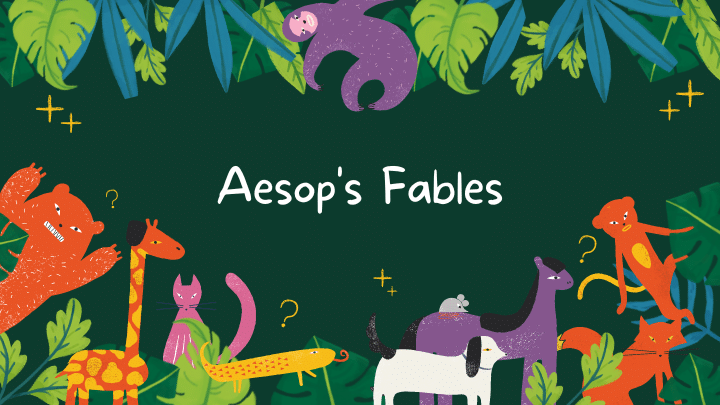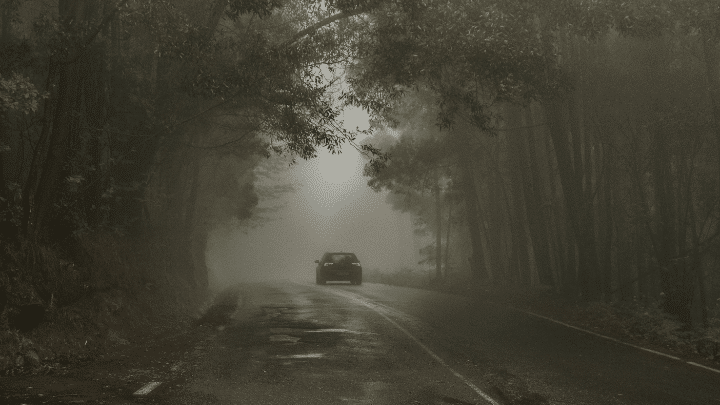15 Best Aesop Fables You Should Read

For centuries, Aesop’s fables have captivated audiences young and old. These timeless tales, often featuring animals as their main characters, offer invaluable lessons about human nature, ethics, and everyday life. While their origin is still debated—Aesop himself may or may not have been a real historical figure—the influence of these fables remains undisputed.
The wisdom encapsulated in Aesop’s fables transcends cultures and generations, making them an educational resource and a foundation for moral instruction. At their core, these stories deal with universal truths, offering cautionary tales that illustrate the complexities of human behaviour.
In this article, we will explore some of Aesop’s most famous fables. Each one, rich in symbolism and meaning, offers unique insights that are as relevant today as they were when they were first told. From the significance of teamwork to the dangers of arrogance, these fables provide a broad spectrum of life lessons.
1. The Tortoise and the Hare
The fable of the Tortoise and the Hare is a classic tale about the virtues of persistence and humility. In the story, an arrogant hare boasts about how fast he is, mocking the slow-moving tortoise. To prove his point, the hare challenges the tortoise to a race.
However, in his overconfidence, the hare decides to take a nap mid-race, convinced that he has all the time in the world to win. The tortoise, meanwhile, keeps going at his own steady pace and crosses the finish line first. The fable teaches us that arrogance and overconfidence can be our undoing, while steadiness and humility bring success.
2. The Boy Who Cried Wolf
The Boy Who Cried Wolf illustrates the consequences of lying. In the fable, a young shepherd boy is tasked with watching over a flock of sheep. Bored and seeking some excitement, he decides to falsely cry out that a wolf is attacking the flock, drawing the villagers to come running.
The villagers soon learn that the boy has lied for his amusement, and when a real wolf shows up, no one believes his cries for help. The fable serves as a stark warning about the consequences of dishonesty and reminds us that trust, once lost, is hard to regain.
3. The Fox and the Grapes
The Fox and the Grapes speaks to the human tendency to rationalise our failures. In the fable, a fox sees some high-hanging grapes and attempts to reach them but fails. After several unsuccessful tries, the fox concludes that the grapes are sour and therefore not worth having.
This fable provides a critical look at how we sometimes handle disappointment. Rather than admitting to our shortcomings or continuing to try, we may disparage what we cannot obtain. The story encourages self-awareness and honesty in evaluating our actions and desires.
4. The Ant and the Grasshopper
The Ant and the Grasshopper highlights the importance of hard work and planning for the future. Throughout the summer, the ant diligently collects food, while the grasshopper spends his days singing and dancing, neglecting to prepare for the upcoming winter.
When winter arrives, the ant has plenty of food stored, but the grasshopper faces starvation. This fable serves as a lesson in the value of preparation and forethought. Ignoring future necessities in favour of immediate pleasure can lead to dire consequences.
5. The North Wind and the Sun
The North Wind and the Sun delves into the power of persuasion over force. The two forces argue over who is stronger and decide to settle the debate by attempting to make a man remove his coat. The North Wind tries first, blowing fiercely, but the man only clings tighter to his coat.
The Sun, on the other hand, gently shines brighter, making the man feel warm and causing him to willingly take off his coat. The moral here is that kindness and persuasion often achieve what brute force cannot. It reminds us to choose our approaches carefully when trying to influence others.
6. The Lion and the Mouse
In The Lion and the Mouse, a small mouse is caught by a lion but pleads for his life, promising to return the favour one day. The lion laughs but sets the mouse free. Later, the lion is caught in a hunter’s net, and the mouse gnaws through the ropes to set him free.
The story is a beautiful illustration of the saying, “No act of kindness, no matter how small, is ever wasted.” It teaches us the value of compassion and that even the seemingly insignificant can have a huge impact when the time comes.
7. The Milkmaid and Her Pail
The Milkmaid and Her Pail serves as a lesson in not counting your chickens before they’re hatched. A milkmaid daydreams about all the things she’ll buy after selling her milk, becoming so lost in her imagination that she spills the milk, ruining her plans.
The fable warns against getting carried away with lofty dreams at the expense of the present. While it’s good to have ambitions, becoming overly preoccupied with future gains can cause us to lose sight of, and possibly jeopardize, what we have now.
8. The Crow and the Pitcher
The Crow and the Pitcher emphasises the value of ingenuity and problem-solving. A crow is desperate for water and finds a pitcher with just a little at the bottom, out of reach. After failed attempts to tip it over, the crow drops pebbles in, raising the water level to drink.
This story encourages innovative thinking when faced with obstacles. Instead of giving up when presented with a challenge, we should strive to find clever solutions, utilising whatever resources are at hand.
9. The Dog and Its Reflection
The Dog and Its Reflection warns against greed and the pitfalls of wanting more than we have. A dog carrying a bone crosses a stream and sees its reflection, mistaking it for another dog with a larger bone. In attempting to snatch the other bone, it drops its own.
The fable teaches the importance of contentment and the dangers of letting greed blind us to the value of what we already possess. It reminds us to appreciate our blessings rather than constantly striving for more, only to lose what we have.
10. The Farmer and the Viper
The Farmer and the Viper tackles the complex topic of innate nature. A farmer finds a frozen viper and takes it home to nurse it back to health. Once revived, the viper bites him, stating that it’s in its nature to do so.
This tale encourages us to be cautious and reminds us that not all acts of kindness are reciprocated in kind. It questions the idea of whether inherent traits can truly be changed and serves as a cautionary tale about placing too much trust in those whose nature is fundamentally harmful.
11. The Town Mouse and the Country Mouse
The Town Mouse and the Country Mouse explores the idea that the grass is not always greener on the other side. Each mouse visits the other’s home, only to realise that what they had initially admired comes with its own set of problems and inconveniences.
The fable highlights the importance of appreciating what you have, rather than coveting the lives of others. It teaches us that every lifestyle comes with its own unique challenges and benefits, and it’s crucial to find what truly makes you happy.
12. The Goose that Laid the Golden Eggs
The Goose that Laid the Golden Eggs emphasises the destructive nature of greed. A man finds a goose that lays golden eggs and becomes rich. However, overcome by greed, he decides to cut the goose open to get all the gold at once, only to find it empty and lose his source of wealth.
This story serves as a warning against excessive greed and impatience. Sometimes our desires for instant gratification can lead us to make poor decisions that result in long-term loss.
13. The Wolf in Sheep’s Clothing
The Wolf in Sheep’s Clothing deals with the themes of deceit and appearances. A wolf dresses in sheep’s skin to mingle with a flock but is eventually discovered and killed by the shepherd.
The fable warns us to be cautious and not take things at face value. While something may appear harmless or even beneficial, it’s essential to look deeper to understand its true nature.
14. The Peacock and the Crane
The fable of The Peacock and the Crane provides a lesson in humility and understanding one’s true worth. The peacock flaunts its colourful feathers, boasting about its beauty, and looks down on the crane for its apparent lack of elegance.
However, when it comes to flight, the crane soars high and gracefully, while the peacock is unable to fly high or far. This fable serves as a reminder that outward appearances and boasting don’t define one’s worth. Every individual has unique qualities and abilities that make them valuable.
15. The Oak and the Reeds
The Oak and the Reeds imparts the wisdom that flexibility can be more durable than rigidity. A mighty oak tree stands tall and proud, looking down on the reeds that bend with the wind. However, when a storm comes, the rigid oak is uprooted, while the flexible reeds survive.
This fable teaches us that being flexible and adaptable in the face of challenges can often be a better strategy than stubbornly standing one’s ground. It encourages us to be open to different perspectives and adaptable in our approaches to problem-solving.
Conclusion
Aesop’s fables, though simple on the surface, offer profound insights into human behaviour and ethical decision-making. Their enduring relevance demonstrates the universality of the lessons they impart. Whether they serve as bedtime stories for children or as moral compasses for adults, these fables hold wisdom that can benefit everyone, regardless of age or background.
It’s incredible how much these brief stories, often featuring animals and inanimate objects as characters, can teach us about the complexities of human nature. These tales remind us to be mindful of our actions, respectful of others, and cautious in our decisions, thus serving as timeless guidelines for living a fulfilling and ethical life.






